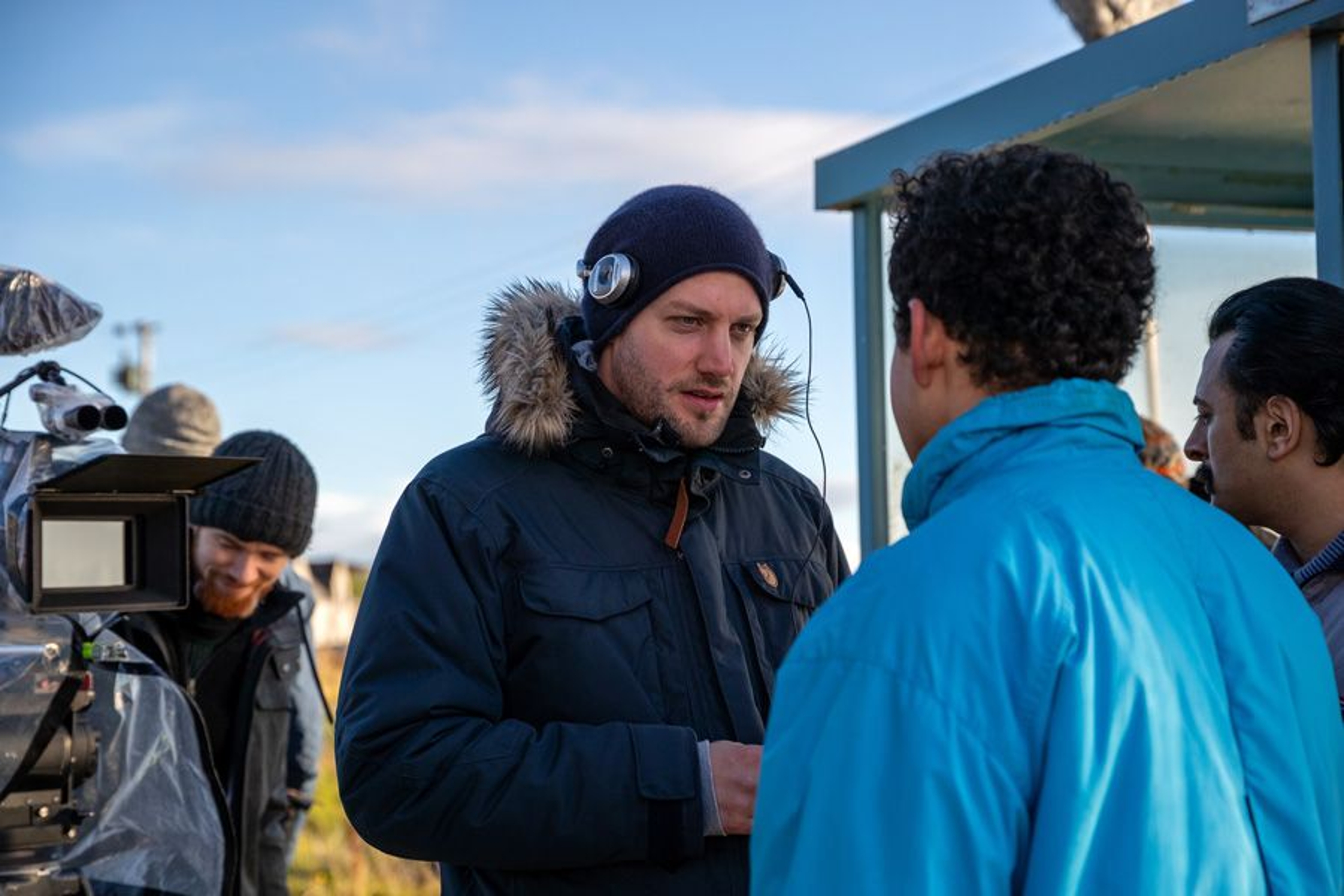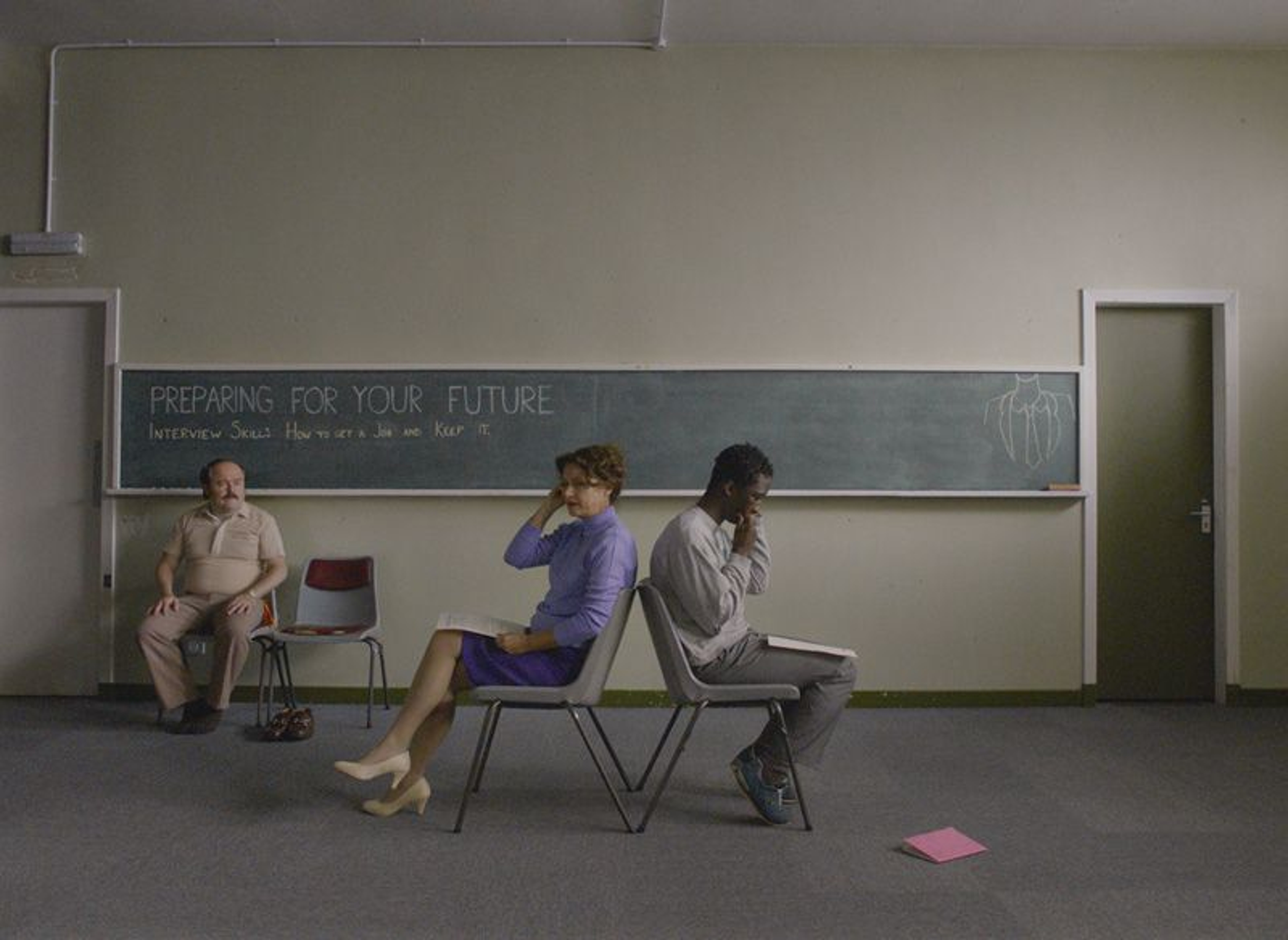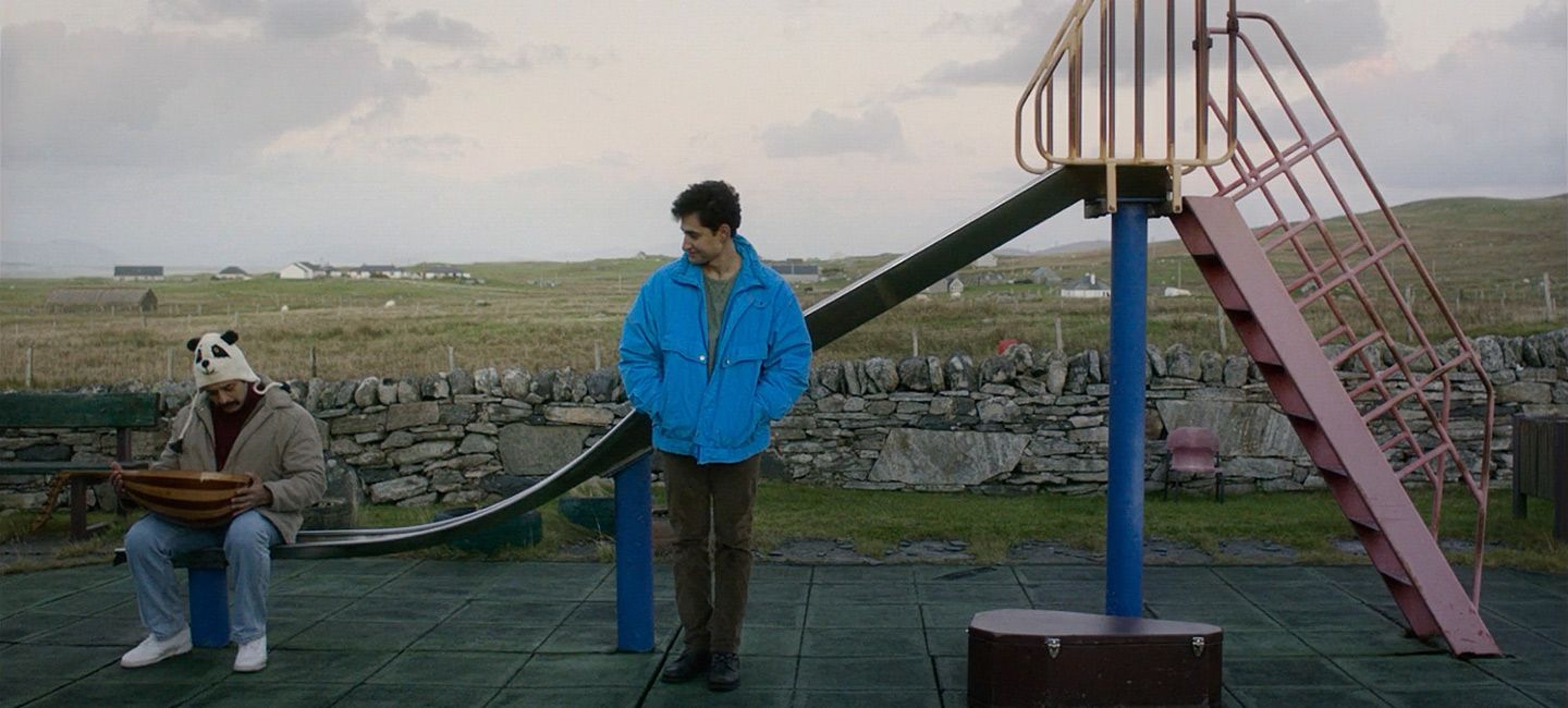In his award-winning film Limbo, Ben Sharrock creates an insightful, lighthearted drama about four asylum seekers waiting to discover their future on a remote Scottish Island. Separated from their families, cultures, and personal history, the four men — Omar from Syria (Amir El-Masry), Farhad from Afghanistan (Vikash Bhai), and two brothers from Nigeria, Wasef (Ola Orebiyi) and Abedi (Kwabena Ansah) — create their own community to make sense of this strange new world. From watching reruns of Friends to caring for a pet chicken to acting out absurd skits on how to properly behave in British society, the four forge a fragile bond that they hope will propel them to the next stages of their life. In a five-star review, The Guardian applauds Sharrock’s unique cinematic vision, describing it as “film-making with a bold view on the world but also as gentle and intimate as a much-loved sitcom.”
Long before becoming a filmmaker, Sharrock was deeply invested in the state of refugees. He spent a year in Syria after studying "Arabic and Politics" at Edinburgh University. As a film student, he lived in refugee camps in southern Algeria to prepare for shooting a short film. “[I] became fascinated with the impact of being a refugee has on one’s own identity,” explains Sharrock, who found his own way to distill the politics, history, and emotions about the issue into a warm-hearted, witty film. We spoke with Sharrock about his distinctive sense of humor, the Uists Islands where the film is shot, and his thoughtful approach to cinematography.
The official trailer for Limbo.
Where did you get the idea of putting four refugees from around the world in a house on a remote Scottish island?
The concept came from two different realities. One is that in Scotland we've had refugees sent to some of the islands. But these people had refugee status already, which is very different from what you're seeing in Limbo. In the film, the characters are asylum seekers, and they do not have the same rights to integrate into society. The other reality is that in certain European countries like Germany and Scandinavia, it is quite common for asylum seekers to be sent to remote communities to wait for their claims to come through. I married those two different realities into this fictional concept of having asylum seekers on a remote Scottish island.

Writer/director Ben Sharrock on the set of Limbo.
The film has a distinctive sense of humor — warm, witty, and somewhat absurdist. What inspired you?
Before I went into filmmaking, I studied "Arabic and Politics" at University. During my final year, I specialized in Middle Eastern Cinema. I watched a lot of Iranian films, which really changed my idea of what cinema could be. There were two films — Elia Suleiman's The Time That Remains and Eran Kolirin's The Band's Visit — that changed everything. After I saw those movies, one right after the other, I realized that I wanted to be a film director. It was a feeling that I had when I watched them that I really understood their vision of filmmaking. What was in my head when I was thinking about storytelling and thinking about films, I was seeing in those two films. I never really tried to do that style. It was just how I see things, especially when I am writing and thinking about stories. That humor comes from that.
You made history by shooting the first feature film on the island of Uist. How did you end up there?
During the writing process, I set the film on a remote Scottish Island. I got to a point though when I didn't really know where that was. I'm from Edinburgh and I had never been to a proper remote Scottish Island. So I looked on Google Maps and I saw the Uists. It is a long chain of islands to the north of Scotland. I had never heard of them. So I told myself, 'I'm going to go to Uist and write my screenplay.' So I went out there and worked in a peat-fire cottage in the middle of nowhere with no WiFi.

Farhad (Vikash Bhai), Abedi (Kwabena Ansah), Omar (Amir El-Masry), and Wasef (Ola Orebiyi) in Limbo.
How did being on the island influence the screenplay?
I would write in the morning, and then I would drive around the island looking for locations in the afternoon. I would walk around the island trying to think about what Omar would be thinking about. During that time, I would bump into locals and have these odd conversations. That all fed into the writing process. Uist was written into the script and became a significant character in the film. We had to do due diligence in the production process, so we location scouted all over Scotland. It would have been easier to shoot on the mainland somewhere. But because I could not find anywhere that felt the same as Uist, and we could not replicate Uist anywhere else, we made the decision to shoot the film there. It was extremely challenging making the film there. We were in a constant battle against the weather, shooting in close to gale-force winds a lot of the time. The island and its weather presented endless challenges, but it was totally worth it. If I had to, I would do it again.

Boris (Kenneth Collard), Helga (Sidse Babett Knudsen), and Abedi (Kwabena Ansah) in Limbo.
As the story progresses, you shift from static, formal shots to more fluid camera movements. Can you talk about your approach to cinematography in the film?
The cinematography was a lot about building Omar's emotional journey. In the beginning, the static nature of the camera is really there to create this feeling of limbo, of stasis. The composition was about marginalizing Omar in the frame, making him small to reflect how he is marginalized in society. Much of the cinematography was about framing Omar to reflect the audience's conception of him and of refugees in general. To do that, we changed the normal aspect ratio to be the Academy ratio [1:1.375], which creates a feeling of the characters being trapped. And that is in a way how we also see Omar. We see the refugees as if they are in a box. In the shots, the floor and the ceiling make it feel like they are in a box. That changes towards the end when Omar does not feel trapped in the same way and the frame opens up to 1:235 [widescreen ratio].
How else did you play with the framing?
We mapped out the cinematography to constantly be in tune with Omar's emotional journey and the way we see him in the film. When Omar is marginalized in the frame, he is also feeling marginalized and alienated, or when he is a distance from the camera, he is feeling disconnected. We also used wide shots to create a feeling of alienation with the vastness of the island and to highlight the sense of isolation that Omar was going through. When we moved from wide shots to extreme close ups, we put the audience physically close to the characters. But we framed them in such a way that their eyeline was looking just beyond the camera. They are shot almost in portrait, as if they are looking directly at the audience, but just slightly off. We wanted to create a direct relationship between us and the characters on screen. The angle makes us look into their eyes and notice their facial movements, so that we start to think about what they are thinking about and try to figure out what they are feeling.
